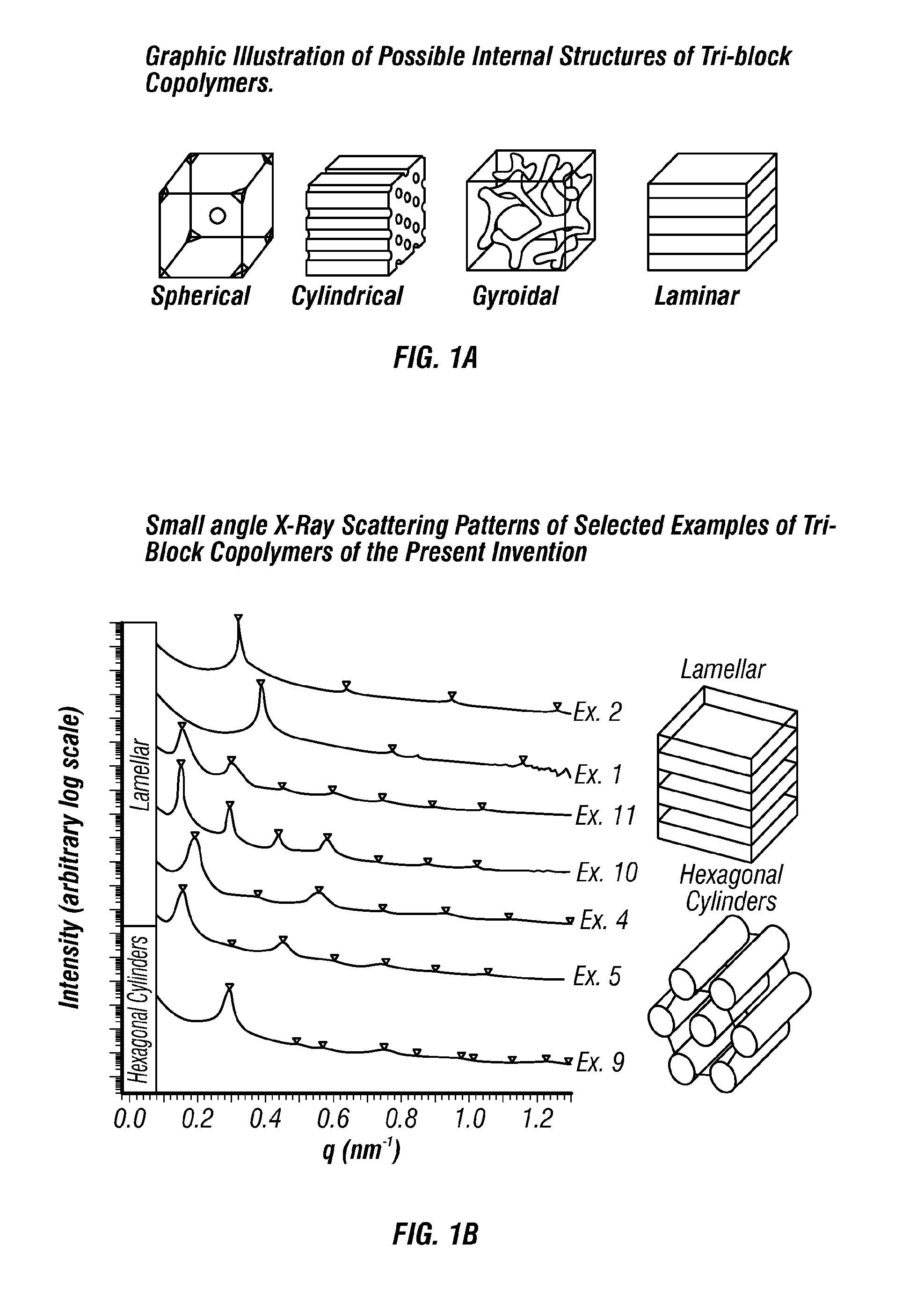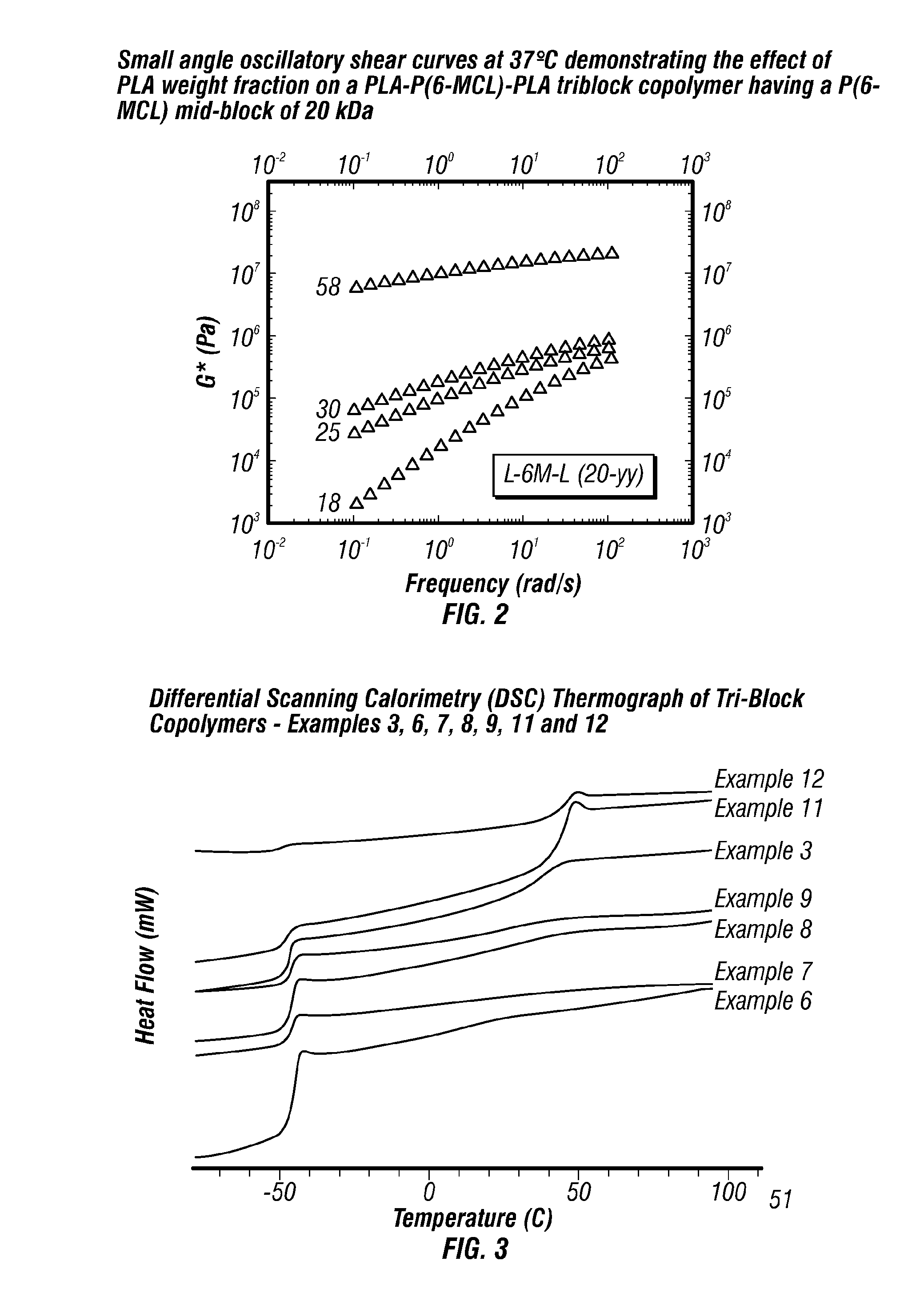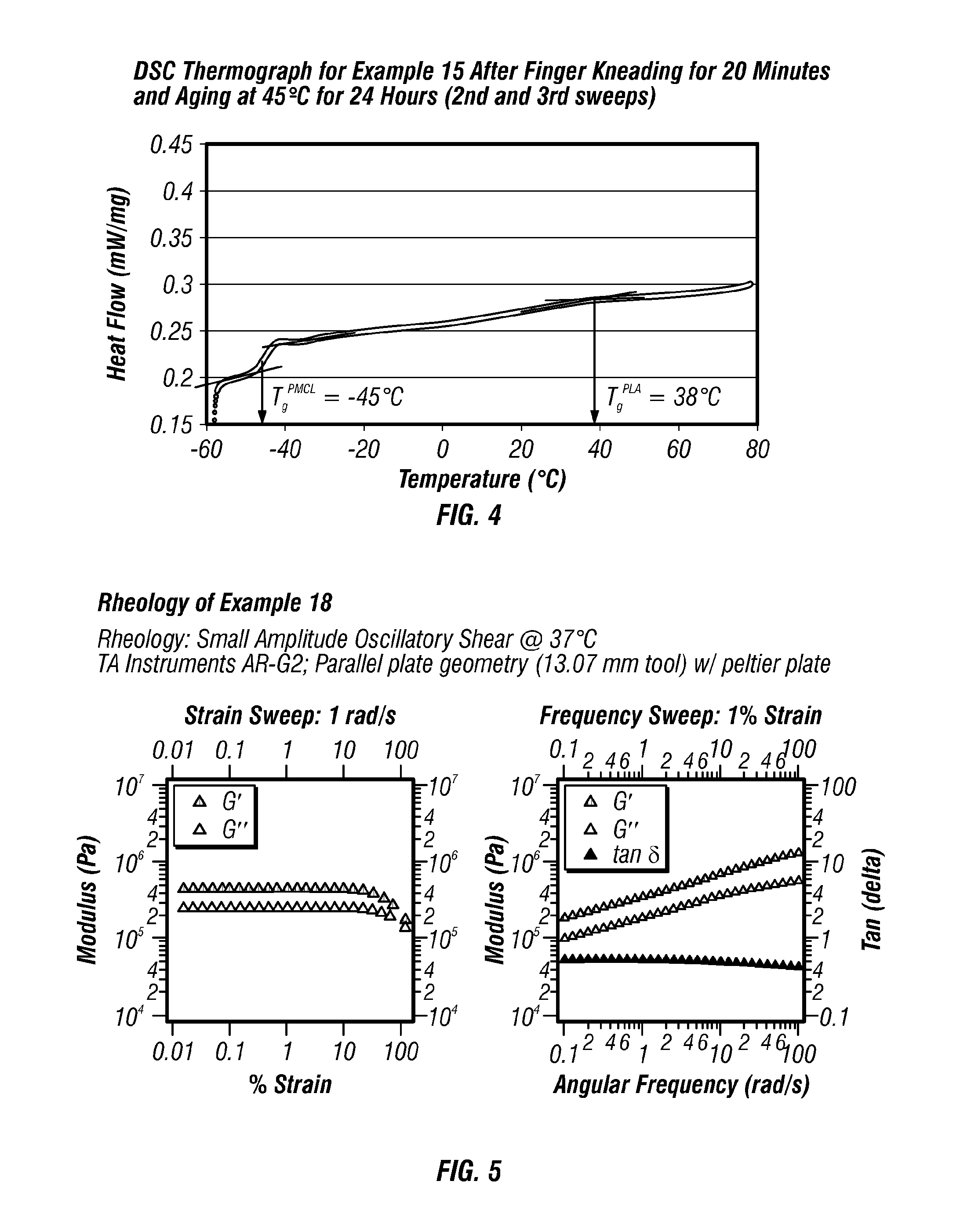Chewing gum compositions
a technology of chewing gum and composition, applied in chewing gum, packaging, food science, etc., can solve the problems of gum litter, improperly discarded cuds to adhere, and consumers intentionally or accidentally dumping gum on sidewalks and other environmental surfaces
- Summary
- Abstract
- Description
- Claims
- Application Information
AI Technical Summary
Benefits of technology
Problems solved by technology
Method used
Image
Examples
examples
[0092]The following examples of the invention and comparative formulations are provided to illustrate, but not to limit, the invention which is defined by the attached claims. Amounts listed are in weight percent.
example 16
[0105]Poly(DL-lactide-b-1,4-isoprene-b-DL-lactide) (LIL) was synthesized by anionic polymerization followed by anionic coordination polymerization. This polymerization requires a functionalized initiator which is not commercially available for synthesis of α,ω-dihydroxyl poly(1,4-isoprene), and its synthesis method is described below.
[0106]The synthesis of the protective initiator for LIL triblock copolymer, 3-triisopropylsilyloxy-1-propyllithium (TIPSOPrLi) followed the procedure published in 2007 by Meuler et al. All reagents without any specific description of purification processes were used as received. Cyclohexane (Fisher) and toluene (Mallinckrodt) were purified by passing through activated alumina columns.
[0107]Equivalent mole of imidazole (Sigma) to triisopropylchlorosilane (TIPS-Cl, Gelest) was added to a round bottom flask, evacuated and purged with dry argon five times, and dissolved in 5 ml of dimethylformamide (DMF) per 1 g of imidazole. The desired amount of TIPS-Cl w...
example 17
[0114]Poly(1,4-isoprene-b-DL-lactide) di-block copolymer which can be used as a plasticizer for the above PLA-polyisoprene-PLA triblock copolymer was synthesized as follows.
[0115]Poly(1,4-isoprene-b-DL-lactide) (IL) was synthesized by anionic polymerization followed by anionic coordination polymerization.
[0116]All polymerization reactions were carried out under dry argon atmosphere. Isoprene (Acros) was vacuum transferred from n-butyllithium (Aldrich) twice at 0° C. for purification. Ethylene oxide (Aldrich) was purified with butylmagnesium chloride (Aldrich) at 0° C. twice and vacuum distilled. DL-Lactide (Purac) was re-crystallized in toluene (Mallinckrodt), dried under dynamic vacuum for 24 hours, and stored in a dry box. Cyclohexane (Fisher) and toluene were purified by passing through activated alumina columns.
[0117]Synthesis of ω-hydroxyl poly(1,4-isoprene): polymerizations of ω-hydroxyl poly(1,4-isoprene) (PI-OH) was carried out under positive argon pressure at 40° C. Cyclohe...
PUM
 Login to View More
Login to View More Abstract
Description
Claims
Application Information
 Login to View More
Login to View More - R&D
- Intellectual Property
- Life Sciences
- Materials
- Tech Scout
- Unparalleled Data Quality
- Higher Quality Content
- 60% Fewer Hallucinations
Browse by: Latest US Patents, China's latest patents, Technical Efficacy Thesaurus, Application Domain, Technology Topic, Popular Technical Reports.
© 2025 PatSnap. All rights reserved.Legal|Privacy policy|Modern Slavery Act Transparency Statement|Sitemap|About US| Contact US: help@patsnap.com



